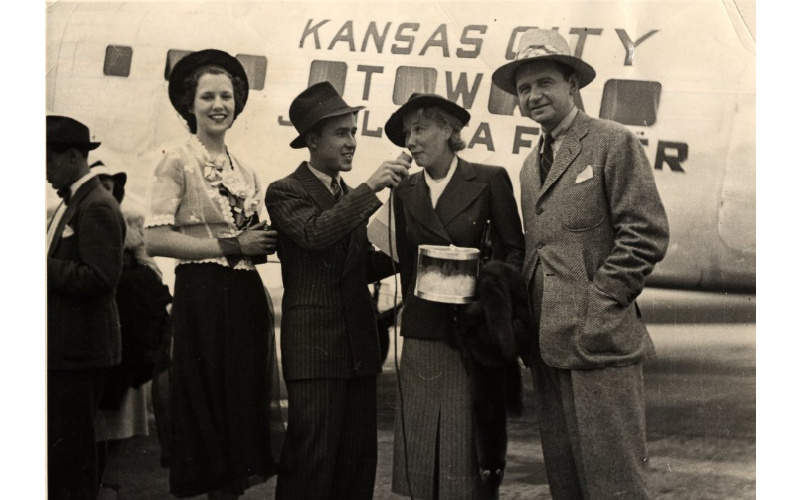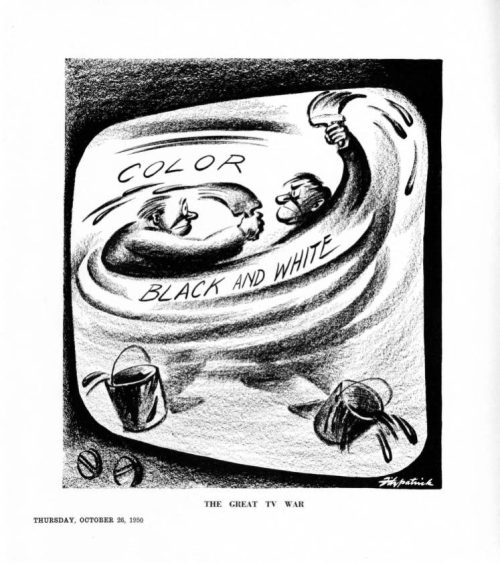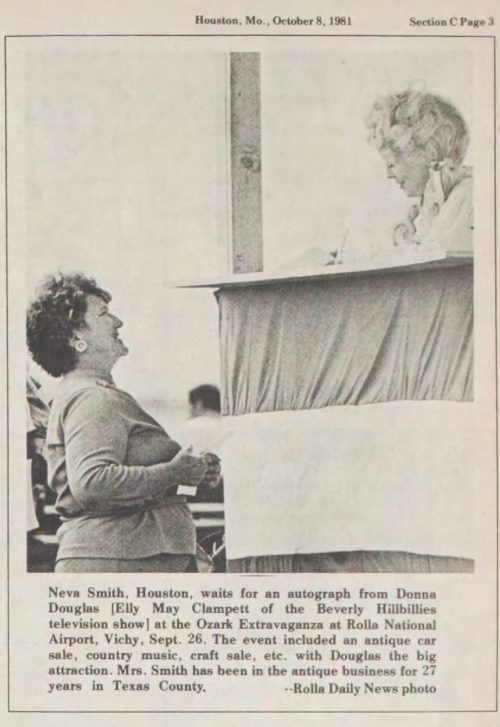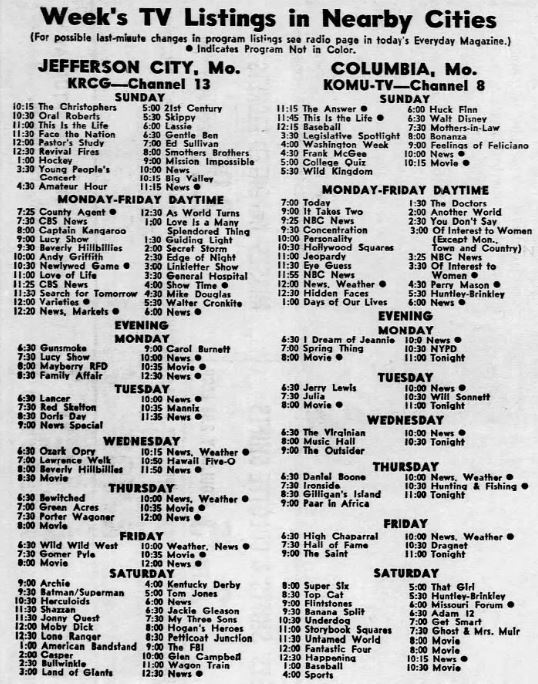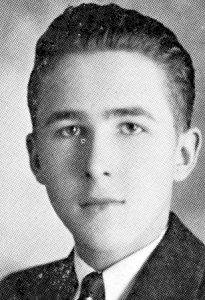
Paul Henning
Introduction
Paul Henning was an influential screenwriter and producer from Missouri. Drawing from his family’s memories of rural Missouri, Henning developed popular movies and television series, including The Beverly Hillbillies, Petticoat Junction, and Green Acres.
Early Years and Education
Paul Henning was born in Independence, Missouri, on September 16, 1911, to William Henning and Sophia Albers. The Hennings lived on a farm in Jackson County, where William was a wheat farmer, but they later moved into Independence for the children to attend the local schools.
Paul Henning graduated from William Chrisman High School in 1929 and was a member of the Honor Society, Literary Society, and the yearbook staff. After high school, he strongly considered attending the University of Missouri, but he could not afford to go there due to his family’s struggles in the Great Depression. Instead, he worked in the Kansas City area and took night classes at the Kansas City School of Law. He later confessed that his brief interest in law dated back to a chance encounter at a neighborhood store with Harry S. Truman, who advised him to consider the legal profession.
On the Radio
Paul’s true passion was always show business. Noted for his singing voice, he frequently sang at church and school functions. With the development of radio in the 1920s, Paul became particularly interested in singing and performing on radio programs. Just such an opportunity presented itself when he accepted a job at KMBC, a CBS radio affiliate in Kansas City.
At the start of his radio career, Paul expressed a willingness to do various jobs at KMBC, including reading announcements and newscasts, reviewing motion pictures, and performing on shows. His first opportunity to be a featured performer came when Associated Grocers offered to sponsor a show he had pitched called “Al and George, the Associated Grocers,” where the voice actors read advertisements for produce items and sang versions of popular songs with the words changed to make listeners laugh. This first show introduced Paul to performing and writing as he was required to develop scripts and characters for the on-air broadcast.
From Kansas City to Hollywood
Through his work at KMBC, Paul met an actress named Ruth Barth. Seeking better opportunities in radio, Paul and Ruth moved to Chicago in the mid-1930s. Paul sent in a sample script he had written for the popular radio program Fibber McGee and Molly and was hired to be a writer on the show. In 1938 he took a writing job with comedian Joe E. Brown and moved to California. A year later, he was joined by Ruth, who had stayed a while longer in Chicago, and the couple married in 1939. They had three children, Linda, Carol, and Paul.
After gaining more experience as a writer in show business, Paul moved to New York to work for radio performer Rudy Vallee and on The George Burns and Gracie Allen Show. When the Burns and Allen show jumped from radio to television, Henning got his start writing for TV. His involvement in the show also resulted in a move back to California.
Seeking an opportunity to be a television producer as well as a writer, Henning left The George Burns and Gracie Allen Show in the 1950s to work on The Dennis Day Show, The Ray Bolger Show, and The Bob Cummings Show.
Henning also helped develop screenplays for Hollywood movies, particularly with Stanley Shapiro. He co-wrote the 1961 romantic comedy Lover Come Back, starring Rock Hudson, Doris Day, and Tony Randall. Lover Come Back was later nominated for an Academy Award for Best Original Screenplay. He also co-wrote the 1964 comedy Bedtime Story, starring Marlon Brando, David Niven, and Shirley Jones.
Rural Comedy
At the end of the 1950s, many television studios shifted their programming toward rural themes such as farming and small-town life. At first, Henning contributed to this new focus by writing scripts for shows like The Real McCoys and The Andy Griffith Show. As the popularity of rural television comedies grew, Henning used his writing and producing experience to develop several popular programs, including The Beverly Hillbillies, Petticoat Junction, and Green Acres.
The Beverly Hillbillies
The concept for The Beverly Hillbillies began when Henning was approached by producer Al Simon to develop a television show. Henning decided to focus on how a country person might react to living in a city they were unfamiliar with. Drawing on themes of rural life from his youth, particularly his experiences with people while camping in southern Missouri, Henning crafted the story of a man, Jed Clampett, who discovers oil on his property, gains a fortune from the sale of his land, and moves his family from the Ozarks to Beverly Hills, California.
As the developer of The Beverly Hillbillies, Henning wrote scripts for most of the show’s episodes. He also arranged the lyrics and music for the show’s theme song, “The Ballad of Jed Clampett.” The Beverly Hillbillies aired on CBS from 1962 to 1971.
Petticoat Junction
Just as his experiences with Ozarkers influenced the creation of The Beverly Hillbillies, so too did family memories of Missouri lead to Henning’s next television show, Petticoat Junction. In reminiscing on her childhood, Ruth Henning often told stories about spending time in Eldon, Missouri, at a hotel once owned by her mother’s family. In Paul’s dramatization of these stories, the Burris Hotel became the Shady Rest Hotel, and the town of Eldon became Hooterville.
The show revolved around the hotel and its owner, Kate Bradley. Surrounding Bradley were her three daughters, Bobby Jo, Billie Jo, and Betty Jo—with Betty Jo played by Henning’s own daughter, Linda Kaye Henning. Many of the episodes revolved around Bradley trying to manage the hotel, the trouble her daughters got into, and the fallout from the various get-rich-quick schemes pursued by business partner Uncle Joe Carson.
The End of Rural Comedy
While never achieving the same level of popularity as The Beverly Hillbillies, Petticoat Junction did produce a spin-off show, Green Acres, based on characters on the program, Oliver Wendell Douglas and Lisa Douglas, and their own experiences in the fictional town of Hooterville. Green Acres aired on CBS from 1965 to 1971. Each show proved to be a hit with audiences. According to Henning, American viewers liked these shows because they offered a fantasy of escape from what he defined as the “rat race” of the big city.
Despite the continued popularity of Henning’s shows, CBS canceled The Beverly Hillbillies and Green Acres in 1971 (Petticoat Junction had been canceled the year before). The cancellation of these shows and others like them were part of the so-called “rural purge.” During this period, network executives canceled rural comedies because they worried that they might lose young viewers and urban audiences, who they thought were less interested in these stories.
Soon after the cancellation of The Beverly Hillbillies, Petticoat Junction, and Green Acres, Henning retired from writing, citing health concerns. When it became clear there was an audience that missed his shows, Henning briefly returned in the 1980s and 1990s to write and produce television specials dedicated to his original characters.
Legacy
Although his television comedies were canceled during the “rural purge,” Henning’s work has been recognized for its impact and importance on American culture. In 1996, Henning was granted the Paddy Chayefsky award by the Writers Guild of America. The award, named after the well-regarded screenwriter and playwright Paddy Chayefsky, was granted to writers who have made major contributions to the artistry of television writing.
Paul and Ruth Henning spent the rest of their lives in California, but they never forgot their Missouri roots. In the 1980s, the Henning and Herschend families sold land in Taney County to the Missouri Department of Conservation to create the Ruth and Paul Henning Conservation Area.
Ruth Henning passed away on January 15, 2002, and Paul Henning passed away on March 25, 2005. They are both buried at the Tuscumbia Cemetery in Tuscumbia, Missouri.
Text and research by Doug Genens & Sean Rost
References and Resources
For more information about Paul Henning’s life and career, see the following resources:
Society Resources
The following is a selected list of books, articles, and manuscripts about Paul Henning in the research centers of The State Historical Society of Missouri. The Society’s call numbers follow the citations in brackets.
Articles from the Newspaper Collection
- Burnes, Brian. “In Defense of ‘The Beverly Hillbillies’.” St. Louis Post-Dispatch. February 4, 2018. p. C1, C6. [Reel #57691]
- “‘Hillbillies’ creator dead at 93.” Springfield News-Leader. March 26, 2005. P. 3B. [Reel #50223]
- Holman, Gregory J. “Memoir celebrates ‘Hillbillies’.” Springfield News-Leader. September 17, 2017. p. 1A, 4A. [Reel #57625]
- Hoyland, Robert J. “Paul Henning’s Sense of Humor Ranks With Best.” Kansas City Star. June 1, 1958. p. 5D. [Reel #21121]
- Linder, Bob. “Nature meets history.” Springfield News-Leader. December 22, 2011. p. 5B. [Reel #54624]
- Overstreet, Sarah. “Love of the Ozarks will bring Ruth Henning home for burial.” Springfield News-Leader. January 25, 2002. p. 1B. [Reel #50185]
- “Paul Henning.” Eldon Advertiser. November 3, 2005. p. 9A. [Reel #10070]
- “Series’ Stars, Wagonmasters Added to Fair Entertainment.” Springfield Daily News. May 22, 1968. p. 21. [Reel #49838]
- “Week’s TV Listings in Nearby Cities.” St. Louis Post-Dispatch. April 27, 1969. p. 7G. [Reel #43309]
- Eskridge, Sarah K. Rube Tube: CBS and Rural Comedy in the Sixties. Columbia: University of Missouri Press, 2018. [REF 791.45 Es46]
- Henning, Ruth. The First Beverly Hillbilly: The Untold Story of the Creator of Rural TV Comedy. Kansas City: Woodneath Press, 2017. [REF 508.1 H3932]
- William Chrisman High School. The Gleam. Independence: William Chrisman High School, 1926. [REF H121.851 In2 1926]
- William Chrisman High School. The Gleam. Independence: William Chrisman High School, 1927. [REF H121.851 In2 1927]
- William Chrisman High School. The Gleam. Independence: William Chrisman High School, 1928. [REF H121.851 In2 1928]
- William Chrisman High School. The Gleam. Independence: William Chrisman High School, 1929. [REF H121.851 In2 1929]
- William James Ryan Papers (K0457)
The William James Ryan Papers consist of research material, draft manuscripts, and oral history interviews and transcripts related to Ryan’s book, Keep Watching Kansas City, and other writings on the history of radio and television broadcasting in the Kansas City region, covering the period 1914-1996. The collection includes a recorded oral history with Ruth and Paul Henning. - Dorothy Richardson Nichols Collection (K0320)
Photographs and motion film of Carl Kay (1901-1945) in his role as musician and photographer depicting big bands, KMBC radio musicians, and other Kansas City places.
Outside Resources
These links will take you outside the Society’s website. The Society is not responsible for the content of the following websites:
- LaBudde Special Collections at University of Missouri-Kansas City
The Joseph K. Redmond, Jr. Collection housed at the University of Missouri-Kansas City includes photographs, movie advertisements, promotional material, newspaper and magazine clippings, theatre programs, notes, payroll and other theatre expense logs related to Redmond’s management of the Uptown and Tower theatres in Kansas City, Missouri. The collection also contains photographs of Paul Henning during his time at KMBC. - Ruth and Paul Henning Conservation Area
This webpage contains relevant information about the history, management, and operations at Ruth and Paul Henning Conservation Area. - Television Academy Foundation
This website is hosted by the Television Academy Foundation and provides access to hundreds of oral history interviews conducted as part of the Foundation’s “The Interviews: An Oral History of Television.” Paul Henning was interviewed for this project in 1997.


